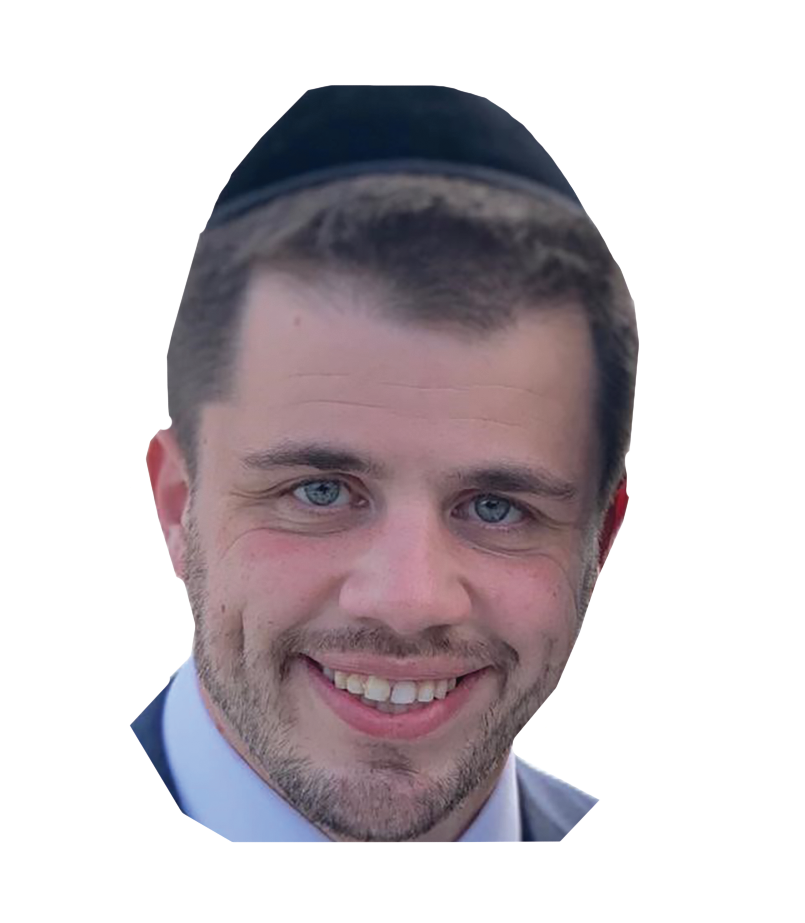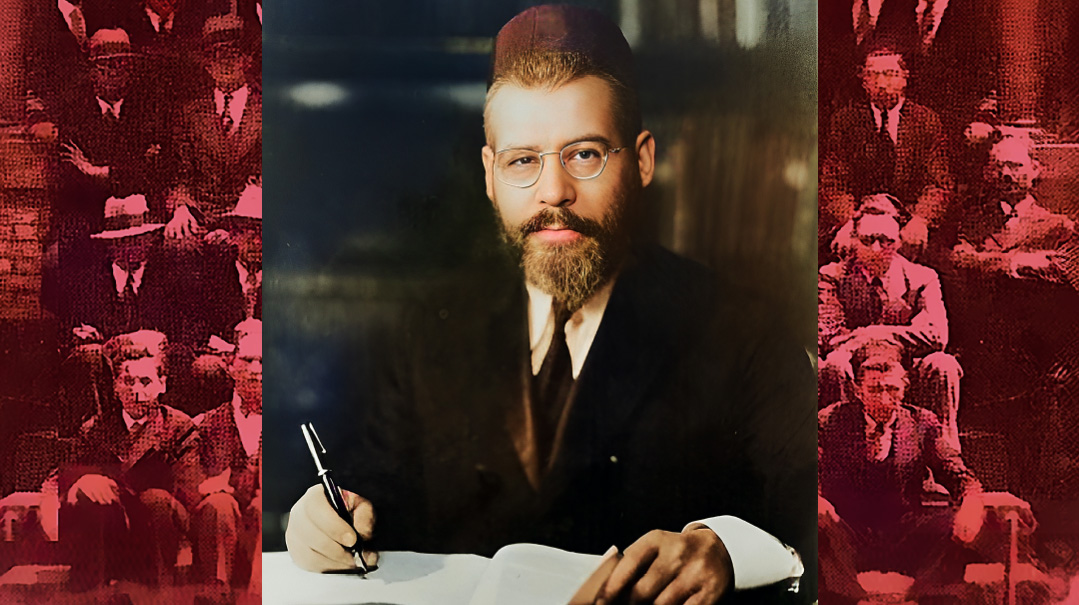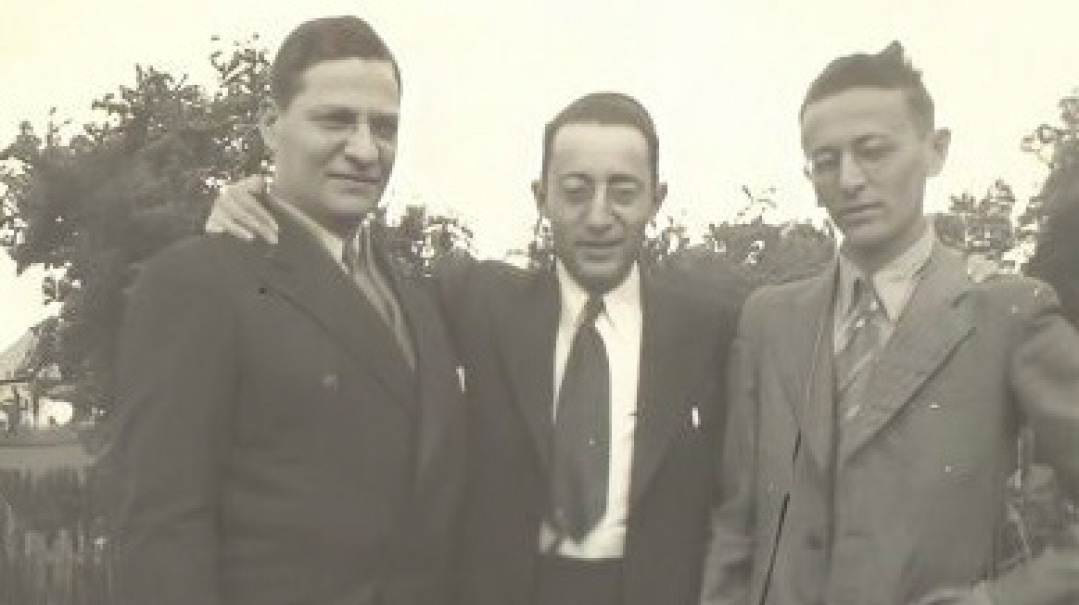Torah Haven in the New World

How Rav Yehuda Heschel Levenberg sowed the seeds of advanced Torah study in America

With additional research by Moshe Dembitzer
Photo Credits: YIVO, JDC Archives, Yeshiva University Archives, Machon Avodas Levi, Levenberg Family, Neuberger Family, Feivel Schneider, Pini Dunner, University of Texas-Austin Archives, Gordon Family, Walkin Family, The Jewish Historical Society of Greater New Haven
When Slabodka student Rav Yehuda Heschel Levenberg arrived in prewar America, his vision for a European-style mussar yeshivah was deemed foreign and unrealistic. Yet he marshaled the support and enthusiasm to open a unique institution on American shores, where students pursued the heights of Torah knowledge along with lofty character development.
He managed to lead his New Haven yeshivah for just a short, tumultuous period — but it left an outsized footprint on the postwar Torah world to come. Like the biblical Yehudah, Rav Yudel Levenberg traveled to a new, strange land ahead of his brothers, to build a yeshivah for the future arrivals. His yeshivah is no longer, but he will forever be counted as a founding father of America’s Torah world.
The summer of 1937 was a turning point for two young Montreal-bred yeshivah bochurim, Nosson Wachtfogel (1910-1998) and Shmuel Schechter (1915-2000). After several years of learning at the Mir Yeshivah in Poland, they had returned home at the behest of their parents, following the passing of the illustrious Rav Yerucham Levovitz (1875-1936). They had agreed that this respite would be a short one — soon they would return to Europe, to the great citadel of mussar in Kelm.
But soon after they arrived back in North America, an opportunity arose for the budding Torah leaders: to attend to the ailing Rav Yehuda Heschel Levenberg, a prime Slabodka talmid and the pride of the Alter himself. Rav Levenberg’s once-robust frame, now ravaged by a relentless onslaught of illness, bore the scars of a life dedicated to the tireless pursuit of Torah and mussar. A stroke had left him partially paralyzed, but his indomitable spirit remained unbroken.
Rav Nosson and Rav Shmuel did not hesitate. They recognized the magnitude of the zechus before them — to attend to a true gadol b’Yisrael, the leading baal mussar in America, who had devoted every fiber of his being to plant the seeds of Torah in the challenging soil of the goldeneh medineh.
And so, when July arrived, they found themselves at Kleinberg’s Hotel in Woodridge, New York, where Rav Levenberg’s talmidim had arranged for him to spend the summer months. The days were long and the work was arduous, but the two young men relished every moment spent in the presence of greatness. They witnessed firsthand the depths of Rav Levenberg’s mesirus nefesh and the sheer force of will that had propelled him to build Torah in America against all odds.

A trio in Kelm: (L-R) Rav Shmuel Schechter (future Beth Medrash Govoha mashgiach), Rav Nosson Wachtfogel, and their close friend Reb Aryeh Stamm Hy”d
As Elul approached, a spark of an idea took hold. They reached out to their friend Rabbi Alexander (Sender) Linchner (1908-1997), an early talmid of Rav Levenberg in New Haven, whose father-in-law, Rav Shraga Feivel Mendlowitz (1886-1948), had just opened Camp Mesivta in nearby Ferndale. Reb Shraga Feivel, who shared a deep bond of respect and common purpose with Rav Levenberg, immediately agreed to host the gadol for a shmuess on the eve of Rosh Chodesh Elul.
The arrival of Rav Levenberg at Camp Mesivta was a scene etched in emotion. The campers, resplendent in their Shabbos finery, sang and danced with unbridled joy. Their rosh yeshivah, the venerated Rav Shlomo Heiman — himself no stranger to the trials of ill health — stood at the camp’s entrance awaiting the arrival of his fellow general in the battle to build Torah in America.
As Rav Levenberg was wheeled into the dining room, a hush fell over the assembled crowd. The silence was so profound that the chirping of birds outside seemed to echo like thunder. And then, the gadol began to speak. Every word was an effort, every breath a labor of love. His voice, once a clarion call that had stirred the hearts of thousands, now faltered and slurred. But the fire in his eyes never dimmed. It was a testament to the indomitable spirit of a man who had given everything — his health, his strength, his very life — to ensure that the flame of Torah would burn bright on American shores.
Just a few months later, Rav Yehuda Heschel Levenberg was niftar, his earthly mission complete. As Rav Shmuel Schechter painted the scene five decades later, he put it quite simply. “He died al kiddush Hashem — for the sake of Heaven.”
But long before the final chapter of his life, he lived al kiddush Hashem — devoting every ounce of his strength and considerable talent to the yeshivos he built, the talmidim he inspired, and the countless lives he touched with his boundless devotion to Hashem and His people.
What sort of chief rabbi circles his city, begging for leftover tomatoes for the yeshivah bochurim in his care? What sort of elite yeshivah student forgoes a promised dowry so as not to pain a hopeful bride? What sort of rav faces arrest and imprisonment because of his refusal to compromise on kashrus?
Rav Levenberg was that sort of leader. He fused the highest standards of Torah learning with the highest standards of mussar, and built a European-style yeshivah in America a century ago, showing young American boys that they, too, could reach the heights of Torah greatness.

Rav Shlomo Heiman and Moshe Rapps in conversation at Camp Mesivta
To survey the landscape of Torah study in mid-20th century America was to behold the beginnings of an unexpected renaissance.
From the Midwest, where the glory of Telz was being restored, to the Mid-Atlantic region, from which proudly shone forth Rav Yaakov Yitzchak Ruderman’s Ner Yisrael, Jewish young men seeking quality Torah education now had some excellent options.
In New York City, America’s largest and most vibrant Jewish community was served by several advanced yeshivos, among them Mesivta Torah Vodaath (which also played a critical role in the origins of other yeshivos, such as Chaim Berlin and Lakewood). And on Manhattan’s Lower East Side, Rav Moshe Feinstein had gained renown as an institution unto himself, a wellspring of Torah wisdom and halachic guidance for petitioners from coast to coast.
Girls’ education, too, wasn’t left behind, as the likes of Rav Boruch and Rebbetzin Vichna Kaplan toiled to transplant the Bais Yaakov movement from its Krakow origins to the streets of Williamsburg and other Brooklyn neighborhoods.
These were relatively recent developments. Prewar America was a place of mass spiritual apathy and an era of rapid Americanization and assimilation. Torah Judaism was largely on the retreat, and every spiritual advance required tremendous grit and passion.
While every spiritual victory was hard fought, each had a unique narrative of struggle against adversity and indifference — no two battles (or those who waged them) were identical. And yet, for all the differences, each of the aforementioned legacy Torah institutions has a common thread woven into the fabric of their origin stories: Rav Yehuda Heschel Levenberg, and his Yeshivah of New Haven.
Oops! We could not locate your form.







